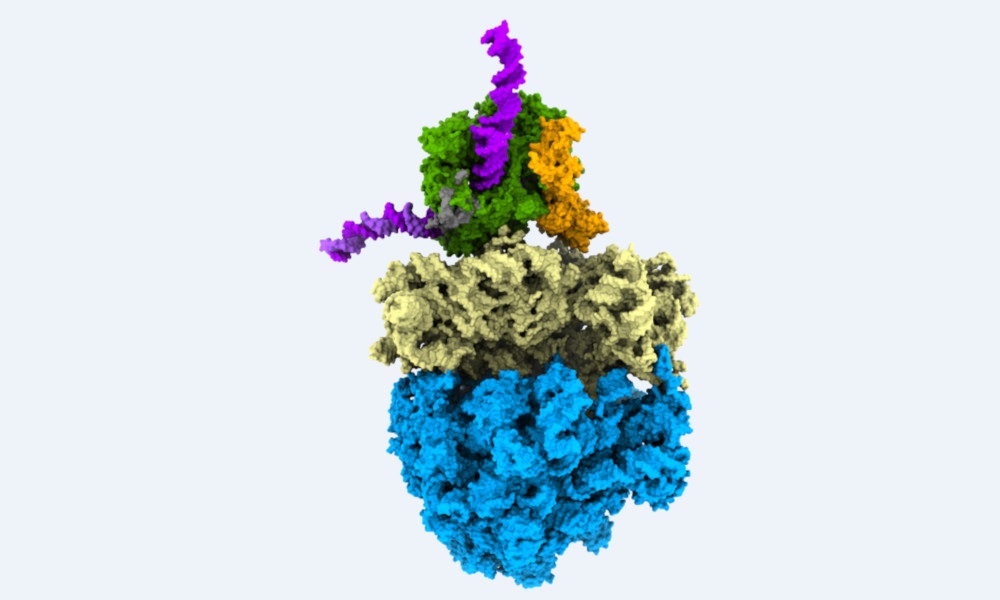
The central dogma of molecular biology

This colourful image shows biological information flow in action: It’s an assembly of DNA, RNA, and proteins, observed directly inside a bacterial cell while turning genetic information into protein.
A stretch of DNA is coloured in purple. Green shows the RNA polymerase enzyme, which is transcribing information stored in the DNA into a form known as messenger RNA. The brownish-yellow part is the NusA protein: It links the RNA polymerase with the ribosome (pale yellow and blue), which is responsible for translating the information stored in the messenger RNA into protein. Finally, connected to the green RNA polymerase, the auxiliary NusG protein can be seen in grey.
This process, with its flow of information from top to bottom, going from DNA to messenger RNA to protein, is called the central dogma of molecular biology. It was first stated by the British molecular biologist Francis Crick in 1957. Five years later, Francis Crick, James Watson, and Maurice Wilkins were awarded the Nobel Prize in Physiology or Medicine for their discoveries concerning the molecular structure of DNA and RNA and the significance of this for information transfer.
Liang Xue, a PhD student in the Mahamid group at EMBL Heidelberg, determined the structure of the complex pictured here using cryo-electron tomography, a method similar to CT scans used in hospitals, coupled with sub-tomogram analysis, cross-linking mass spectrometry, and integrative modeling.
Credit: Liang Xue, Julia Mahamid/EMBL
If you have a stunning picture of your science, your lab or your site, you can submit it here.


